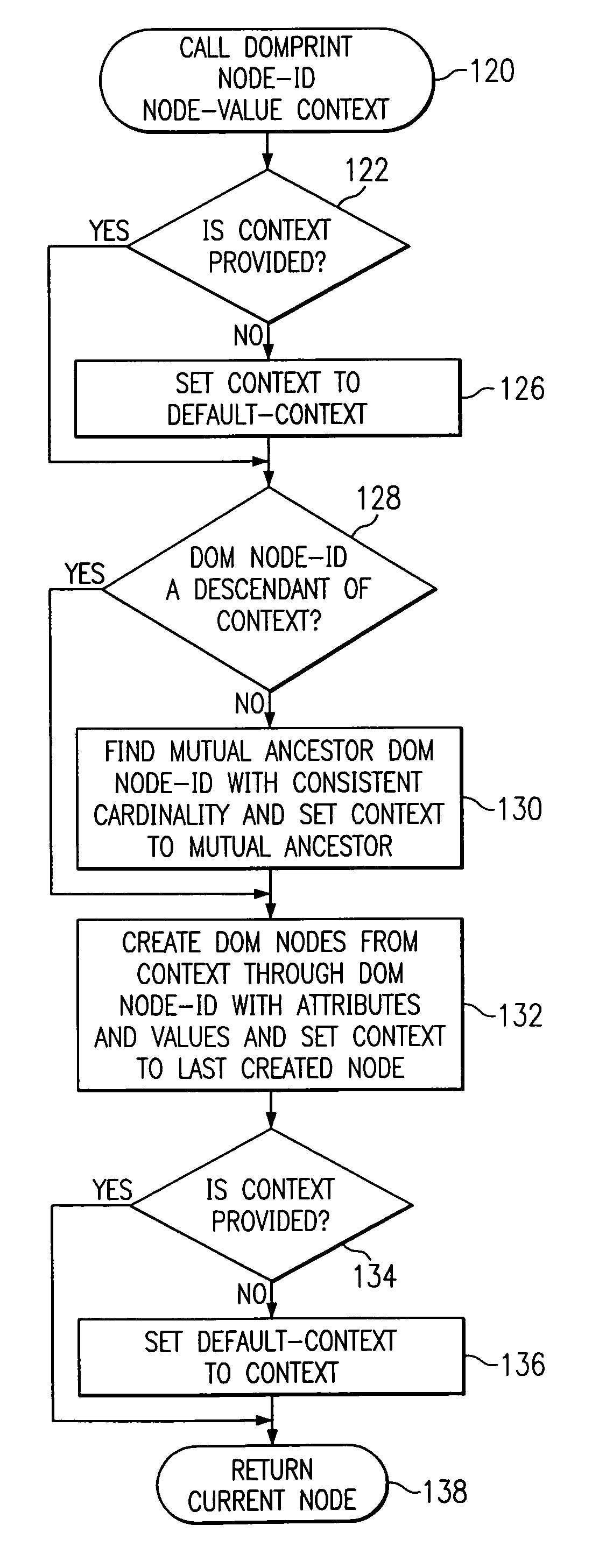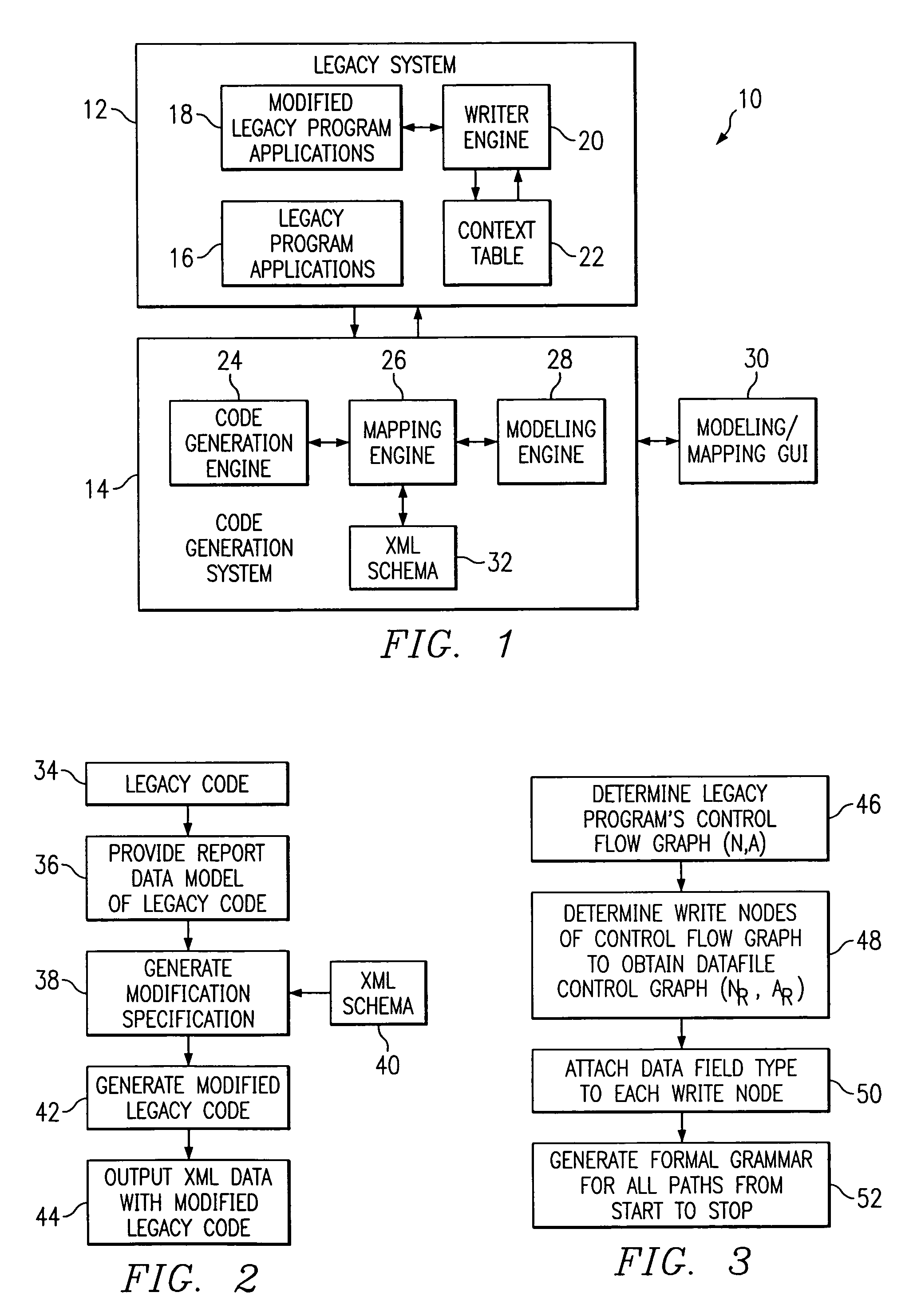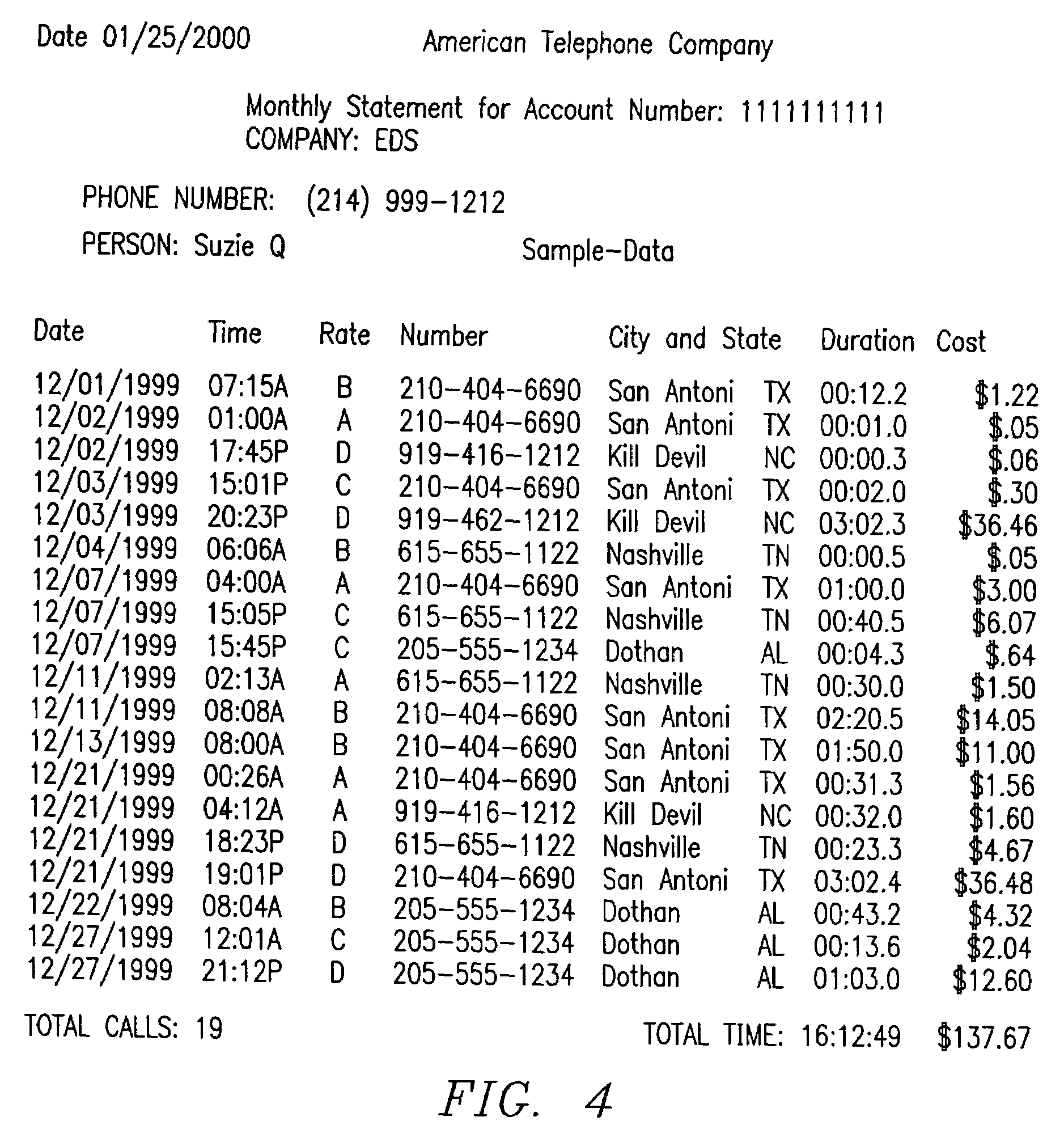Method and system for reporting XML data based on precomputed context and a document object model
a document object model and context technology, applied in the field of computer systems, can solve the problems of cumbersome maintenance, difficult and expensive process implementation, complex transformation of data output in legacy computer system format, etc., to reduce time and expense, enhance program complexity management, and eliminate the risk of syntactic errors.
- Summary
- Abstract
- Description
- Claims
- Application Information
AI Technical Summary
Benefits of technology
Problems solved by technology
Method used
Image
Examples
Embodiment Construction
[0042]Preferred embodiments of the present invention are illustrated in the figures, like numeral being used to refer to like and corresponding parts of the various drawings.
[0043]In order to take advantage of the opportunities provided by the use of XML as a medium for e-commerce, businesses will eventually have to either replace existing legacy computer systems or re-write the applications on the legacy computer systems. However, businesses have substantial investments in their existing legacy computer systems and related applications so that wholesale replacement of these systems and applications is not practical in the short term. Legacy computer systems perform essential functions such as billing, inventory control, and scheduling that need massive on-line and batch transaction processing. Legacy computer system applications written in languages such as COBOL remain a vital part of the enterprise applications of many large organizations for the foreseeable future. In fact, this...
PUM
 Login to View More
Login to View More Abstract
Description
Claims
Application Information
 Login to View More
Login to View More - R&D
- Intellectual Property
- Life Sciences
- Materials
- Tech Scout
- Unparalleled Data Quality
- Higher Quality Content
- 60% Fewer Hallucinations
Browse by: Latest US Patents, China's latest patents, Technical Efficacy Thesaurus, Application Domain, Technology Topic, Popular Technical Reports.
© 2025 PatSnap. All rights reserved.Legal|Privacy policy|Modern Slavery Act Transparency Statement|Sitemap|About US| Contact US: help@patsnap.com



